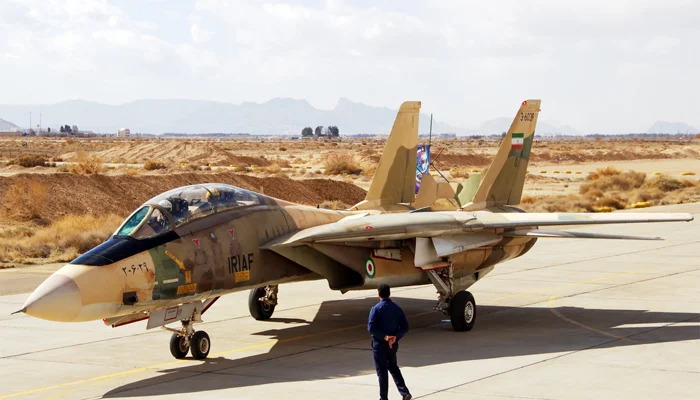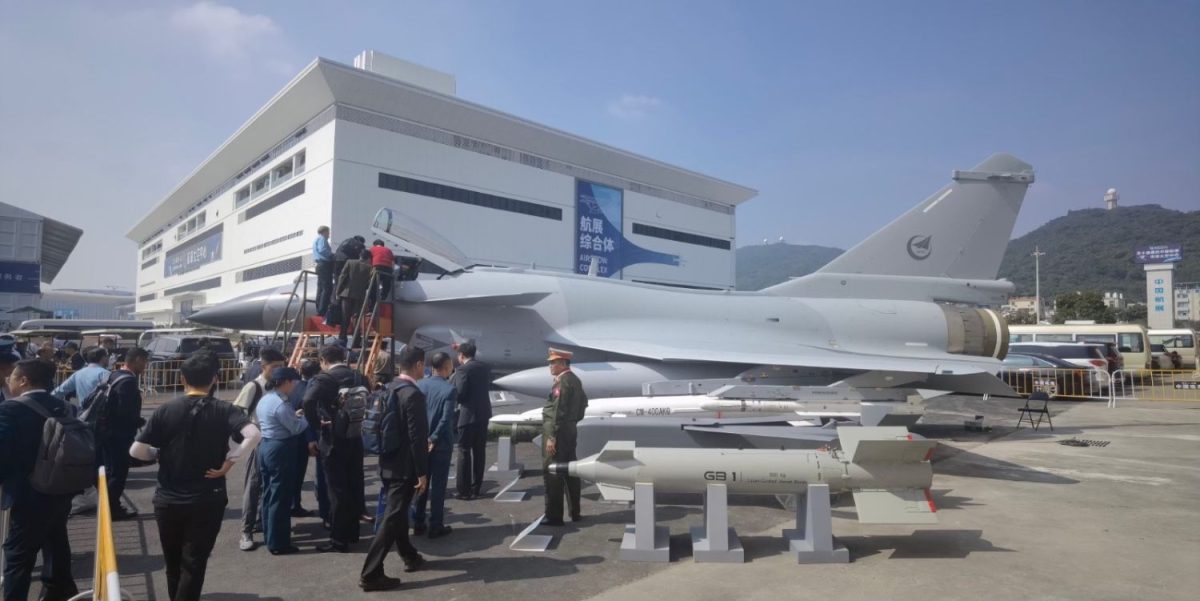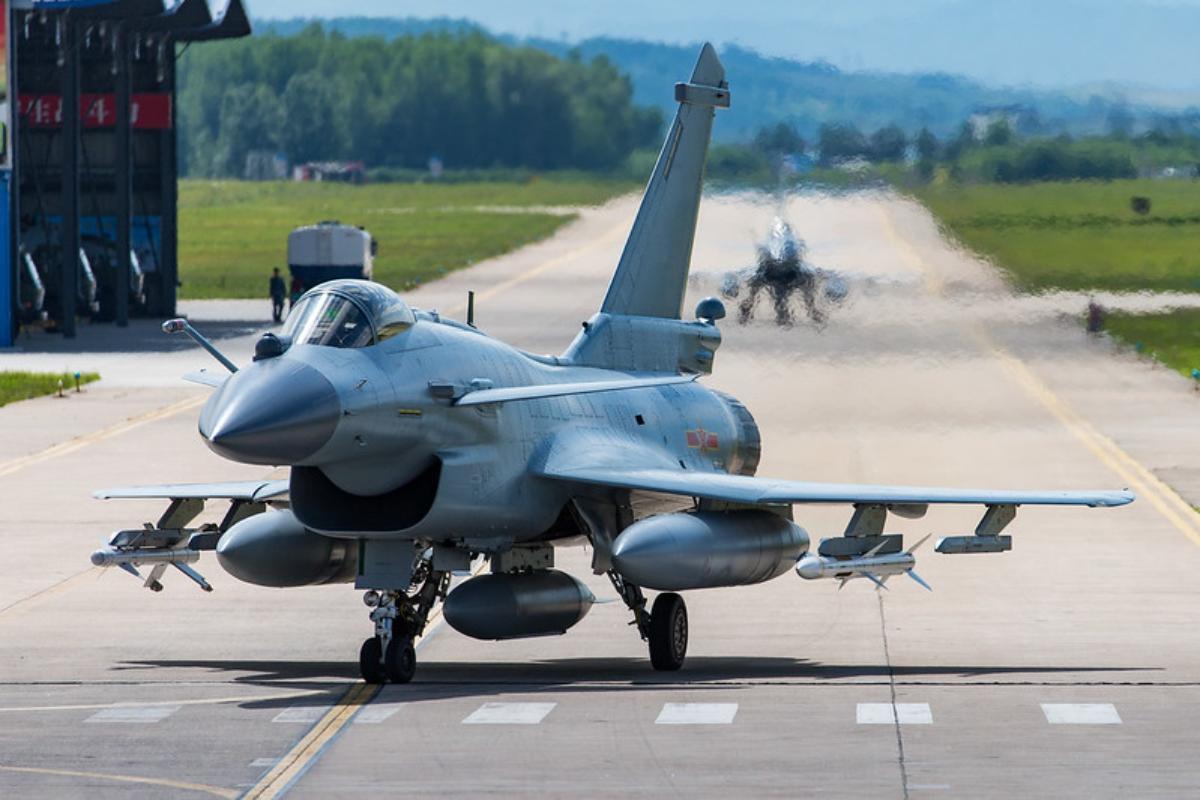After suffering major losses in the recently concluded ’12-day War’, Iran is reportedly mulling the purchase of Chinese J-10C (Vigorous Dragon) fighter jets.
The alleged purchase appears to be an attempt by the Iranian leadership to rebuild its Air Force, which is currently composed of aging Cold War-era jets sourced from the United States.
The Iran-Israel conflict began on June 13 with unprecedented Israeli raids and the assassination of Iran’s top military leadership and nuclear scientists. Iran retaliated with salvos of ballistic missiles, and the fighting continued for more than a week, until the US joined in and bombed three Iranian nuclear facilities on June 21 using heavy bunker buster bombs and sub-launched Tomahawk missiles.
Iran retaliated with a salvo of ballistic missiles fired at the US Al Udeid base in Qatar, following which a ceasefire was declared on June 25.
Shortly after the ’12-day War’ ended, Iran’s Defense Minister Aziz Nasirzadeh, accompanied by the country’s top military leaders, left for China to attend the Shanghai Cooperation Organization (SCO) defense ministers meeting on June 26. The visit—first after the hostilities ended—piqued the interest of observers.
Chinese Defence Minister Dong Jun reportedly hosted Nasirzadeh and others on the PLA Navy’s Type 052D destroyer Kaifeng.
On his part, Nasirzadeh “expressed gratitude to China for its understanding and support of Iran’s legitimate stance,” as reported by the Chinese news agency Xinhua.
The minister “hopes that China will continue to uphold justice and play an even greater role in maintaining the current ceasefire and easing regional tensions,” he was quoted as saying.
Although China did not confirm whether it would provide material or military support to Iran (the country’s largest oil supplier) following the war, analysts believe that Nasirzadeh likely visited China for military procurement. And, if reports are anything to go by, the Chinese J-10C is speculated to be the most coveted item on this list.
J-10C For Iran?
Reports suggest Nasirzadeh met with senior Chinese defense and aerospace officials. Additionally, people close to Iran’s defense procurement apparatus reportedly told the media that the cost, delivery schedule, and technology transfer terms of the J-10C were also allegedly discussed in private.
While these claims could not be independently verified, they warrant closer scrutiny in light of the fast-changing geopolitical and security dynamics.
For one, Iran’s inferior air power has become its Achilles heel, at a time when it remains marred in a sustained rivalry and animosity with Israel.
Iran has undoubtedly developed deadly drones and ballistic missiles that gave Israel a hard time in the war, but it continues to fall short when it comes to fighter jets.
The Iranian Air Force has been operating the US-origin F-14 Tomcat that were acquired prior to the Iranian Revolution of 1979. It has done a magnificent job at keeping these jets flyable without any external support, often by cannibalising airframes to keep some Persian Tomcats in the air.

However, these fighters posed little resistance to Israeli F-15s, F-16s, and the F-35s that freely bombed targets deep inside the country. They made no attempt to intercept the massive number of American warplanes that entered Iranian airspace to bomb its nuclear facilities.
In fact, IDF reportedly managed to destroy or severely damage multiple F-14 Tomcats over the course of this brief war. Thus, it dealt a significant blow to whatever little currently remains of the Iranian Air Force.
In 2023, Tehran had earlier announced the finalisation of an agreement to buy two dozen Russian Su-35s. However, more than two years after that announcement, the first of the 24 Su-35s has yet to land in the country, indicating that Moscow is dragging its feet.
Several analysts have observed that the situation would have been different for Iran if it possessed the Flanker-Es (the Su-35s).
At one point last year, the delays in delivery led analysts to surmise that the deal might have been called off due to pressure from the West. However, a senior Revolutionary Guards commander, Ali Shadmani, affirmed that his country had indeed purchased the aircraft and the deal was very much in place.
“Whenever necessary, we make military purchases to strengthen our air, land, and naval forces. The production of military equipment has also accelerated,” he was quoted as saying.
Nonetheless, their delivery remains elusive even though Russia has already delivered the Yak-130 trainer aircraft, which the Islamic Republic also purchased in 2023.
After being hit by Israel Defense Forces (IDF) strikes, Iran is likely looking for alternatives. Interestingly, Iran has shown interest in the J-10 in the past, making the latest speculations more plausible.
As previously reported by the EurAsian Times, Iran’s Air Force chief, Brigadier General Hamid Vahed, was spotted inspecting the Chinese J-10C, a 4.5th-generation aircraft, during a visit to the Zhuhai Air Show in November 2024, sparking speculations that Tehran may be interested in acquiring the aircraft. At the time, Vahedi assessed the capabilities of the J-10C, and also met with his Chinese counterpart, General Chang Dingqiu, to discuss possible areas of cooperation between the two services.

At the time, pro-Iranian observers even stated that the aircraft was a viable option for Iran in terms of capability and price.
Publishing the photo of the visit by the Iranian Commander, a popular Iranian outlet, Iran Observer wrote on the social media site X (formerly Twitter): “With a price tag of $40 million, 100 J-10s will cost $4 billion. The J-10s are better than the F-16s in terms of weapons and flight performance.”
Additionally, some past reports from 2021 suggested that Iran was interested in purchasing 36 J-10Cs as a barter for its oil and natural gas; however, China was reluctant to sell the fighter jets to Iran due to concerns about US sanctions. China’s reticence was also attributed to Iran’s inability to pay in cash. However, the two countries have since made significant progress.
On its part, China has been actively targeting the wider Middle East market to export its aircraft, positioning the J-10C as a superior alternative for the French Rafale, the European Eurofighter Typhoon, and the US F-16 Fighting Falcons.
The Chinese aircraft cost just $40-50 million per unit, making them an attractive option for countries looking to upgrade their fleets without draining the state purse—an attractive prospect for a battered Tehran.
The J-10C has seen an uptick in popularity after Pakistan claimed that its J-10C, equipped with long-range PL-15E missiles, downed three Indian Air Force (IAF) Rafale fighters during the four-day Indo-Pakistan clash in May 2025.
While these claims remain unsubstantiated and have not been backed by evidence from Pakistan, they have been widely amplified by Chinese media and used by the state leadership to promote the aircraft for export.
The aircraft, touted as the poster child of China’s ingenious combat aviation capability, has only been purchased by Pakistan so far. Despite its efforts to attract buyers, it has been unable to make a breakthrough in the export market. Therefore, a potential Iranian purchase would be a win-win situation for both Tehran and Beijing.

The J-10C is frequently likened to upgraded US F-16 Fighting Falcon variants, which are also operated by the Israeli Air Force. Like the F-16, its fly-by-wire flight control system uses a computer to maintain its extremely agile, aerodynamically unstable airframe.
The J-10C has an indigenous AESA radar, imaging infrared seeker (IIR) PL-10, WS-10B engine, and PL-15 air-to-air missiles. It features state-of-the-art capabilities, including electronic warfare, computerized glass cockpit instruments, precise air-to-ground strike, beyond-visual-range combat, and in-flight refuelling.
Additionally, the Chinese multirole fighter also has a forward-looking infrared and laser target designator pod. This pod was created to facilitate the use of weapons guided by satellite navigation and lasers.
The big question remains: Can Tehran afford to acquire and maintain both Su-35 and J-10C jets from Russia and China simultaneously?
For now, it appears unlikely that Iran will buy both J-10C and Su-35 due to financial, logistical, and strategic constraints.
The Chinese J-10C could prove a more practical, fast, and cost-effective solution for Iran, given its proven performance, lower cost, and China’s reliable supply chain, but canceling the Su-35 deal with Russia, arguably its most significant ally, would not go down well with Moscow.



